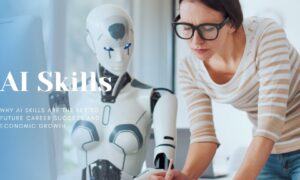During every tech boom, from the late 1990s dot-com era to today’s AI revolution, a familiar pattern emerges: abundant funding allows tech companies to offer high salaries that attract skilled workers in droves. While many focus on whether these booms create financial bubbles that harm investors, research by Harvard University’s Adrien Matray and his co-author Johan Hombert reveals a more concerning long-term cost: the permanent damage to workers’ careers.
In their comprehensive study examining France’s experience during the 1990s tech bubble, Hombert and Matray found that skilled workers who joined the Information and Communication Technology (ICT) sector during the boom suffered significant long-term earnings losses. Fifteen years after entering the sector, these workers earned, on average, 6% less than similar workers who started their careers in other industries.
This finding challenges the conventional wisdom that even if tech bubbles destroy financial wealth, they benefit the broad economy by developing new technologies, and as a result workers by allowing them to acquire valuable skills. The reality appears more complex and troubling.
The Long-Term Cost of Skill Obsolescence
Hombert and Matray’s research points to a phenomenon economists call “skill obsolescence” to explain why workers who join booming tech sectors end up relatively worse off than similarly educated workers who went into other sectors. During periods of rapid technological change and easy financing, companies experiment with many new technologies and approaches. Workers develop highly specialized skills tied to these emerging technologies. When the dust settles, many of these technologies prove to be dead ends, leaving workers with outdated skill sets that have limited value in the market.
The researchers found this problem is particularly acute for highly skilled workers like software engineers and data scientists. While low-skill workers in the tech sector (like administrative staff) saw no long-term wage penalty, high-skill workers experienced the largest earnings declines. The very technical expertise that made these workers valuable during the boom became a liability in the aftermath.
Hombert and Matray’s research shows that financial speculation that typically characterizes periods of intense technological change exacerbates this problem. During the late 1990s boom, companies that received the most capital ended up being the ones whose workers experienced the largest long-term wage declines. This suggests that abundant funding allowed projects of lower quality to be financed, exposing more workers to skills that would ultimately become obsolete.
Implications for the AI Revolution
These findings have important implications for today’s AI boom. With record levels of investment in AI companies, which use this capital to hire skilled workers at premium salaries, the research suggests that many of these workers may be developing specialized skills in AI approaches that will prove to be dead ends, potentially damaging their long-term earning potential.
Hombert and Matray emphasize that this doesn’t mean all AI skills will become obsolete — some will surely become foundational to the future economy. The challenge is that during a boom, it’s nearly impossible to distinguish between truly transformative technologies and temporary fads. Workers betting their careers on specific AI techniques today are making high-stakes gambles on which approaches will endure.
https://www.pexels.com/photo/a-bearded-man-playing-chess-8438923/
Strategies for Workers, Employers, and Policymakers
The researchers propose several solutions to this problem. For workers, they suggest focusing on developing flexible, transferable skills rather than going all-in on highly specialized technical knowledge. Companies should invest in helping employees continually update their skills rather than letting them become too narrowly specialized. They argue that policymakers should consider that easy monetary policy while stimulating innovation, may have hidden costs in terms of human capital development.
The implications extend beyond individual careers to overall economic productivity. Their research indicates that when a tech boom channels large numbers of skilled workers into developing ultimately obsolete skills, it represents a significant misallocation of human capital. This can weigh on long-term economic growth even after the financial effects of a bubble have faded.
While many celebrate tech booms as engines of innovation that, despite their financial excesses, leave behind valuable infrastructure and technologies — such as the fiber optic cables laid during the dot-com bubble — this research suggests these episodes may also leave behind something less positive: a generation of skilled workers whose human capital has been constrained by their time in the sector.
The researchers don’t suggest preventing tech booms or discouraging workers from joining innovative sectors. They acknowledge that innovation is crucial for economic growth, and some degree of experimentation and failure is inevitable. However, they argue for being clear-eyed about the risks, particularly for workers.
Matray and Hombert advise today’s skilled workers who are considering joining AI startups or transitioning into emerging tech fields to carefully weigh the tradeoffs. The high salaries and excitement of working on cutting-edge technology come with real risks to long-term career development. They recommend focusing on building foundational skills that will retain value even if specific techniques or approaches fall out of favor.
Employers and policymakers also have a critical role to play. Companies should actively invest in employee reskilling and promote career pathways that enable workers to broaden their expertise. Policymakers, on the other hand, must balance the benefits of fostering innovation with the potential long-term costs to human capital. This may involve policies aimed at moderating speculative investments and ensuring that workers have access to continuous education and skill development programs.
Ultimately, while the allure of cutting-edge industries is undeniable, the lessons from history are clear: sustained economic growth and innovation require more than just financial capital—they depend on preserving and enhancing the value of human capital. By addressing these challenges proactively, we can ensure that the benefits of technological progress are shared more equitably, creating a future where innovation bolsters, rather than diminishes, workers’ long-term potential.




































